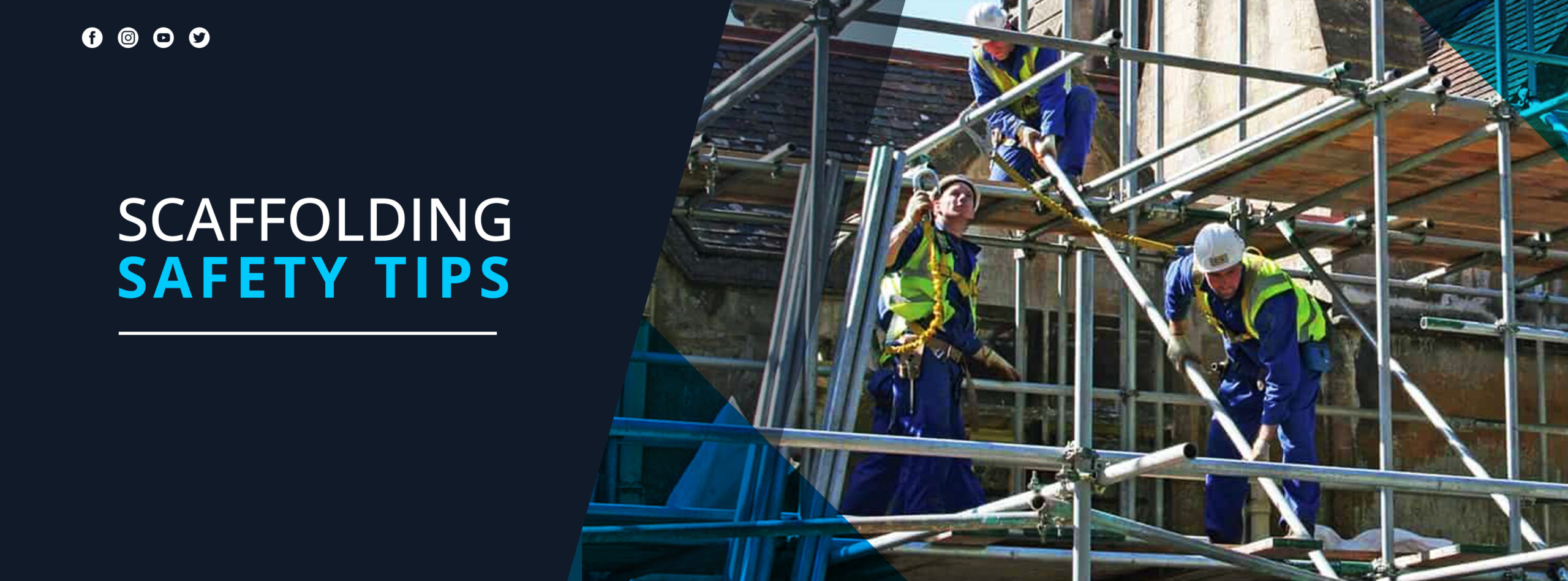When operating at a height, one of the most important considerations is safety. Everyone has likely heard horror stories about injuries sustained as a result of scaffolding arrangements on construction sites or on existing structures. There’s no denying that the risk of serious harm is always at a peak in scaffolding-related accidents. Working on scaffolds can be almost as safe as working on the ground if done with utter precaution.
Here are some of the most effective methods for following correct safety procedures on the job and reducing the danger of scaffolding injuries. But before understanding the safety tips, we must know about scaffolding and its purpose.
What is Scaffolding?
Scaffolding is a temporary platform that is frequently built to accomplish work at a greater elevation. In order to avoid people falling from the height, scaffolding safety precautions must be followed.
It aids in constructing, maintaining, and repairing buildings, bridges, and other man-made structures by supporting a work crew and materials.
Scaffolding Safety Precaution
- Use proper safety equipment – First and foremost, when working in any industrial or construction situation, especially at height, personal protective equipment (PPE) is required. Because falling objects cause most of the injuries on scaffolds, wearing a hard hat can go a long way toward averting catastrophic injuries. When working on platforms, non-slip footwear and fall arrest devices are also essential.
- Adequate training – All personnel who will be using scaffolding must be trained in the construction and operation of these structures. Everyone should be trained in how to climb on and off the scaffolding safely, prevent the hazards of a fall, and assemble and disassemble the scaffolding. Another part of training that may be overlooked is that all workers who will be working with the structure should be familiar with its load-bearing capabilities.
- Inspect scaffolding materials – Before you begin constructing your work platforms, you must inspect all of your resources. Make sure none of the parts you’re using have any flaws or damage that could jeopardize the scaffold’s structural integrity. Furthermore, all components should come from the same manufacturer and be intended to work together. Mismatched parts can cause structural failure and constitute a serious scaffolding hazard.
- Regular maintenance – All tools and supplies used regularly should be taken care of and off the scaffold and stored until they’re needed again. Scaffolding should be kept as clear of obstructions as feasible during working hours, with all extraneous debris and other equipment removed. Inspections of the scaffolding should be done on a regular basis by someone who is knowledgeable about the safety regulations and the design of scaffolding. When employing suspended platforms, inspect all components with connecting pins or plates, trusses, beams, stirrups, or welds for indicators of weakness on a regular basis.
- Use guardrails – If you’re working on a scaffolding system that’s higher than 10 feet from the ground, guardrails should be installed on all three sides facing away from the building. These can prevent a lot of falls caused by a lack of balance, and they’re a wonderful help on a regular basis. Three guardrails all the way around, comprising a top rail, a mid-rail, and a bottom rail, is the safest configuration.
- Organize your tools – After each use, tools and equipment should be sorted and put away. Check that no tools or supplies are left on the platform at the end of each day—clutter can cause trip and fall injuries, or it can be a hazard for people working on lower levels.
- Consider Weather – When operating at a height, you must ensure that the working environment is safe. Working in inclement weather or in the presence of other environmental risks might raise the chance of serious injury. High winds, for example, could put individuals working on the scaffold in danger of injury. An electrical line that has been downed by a storm could pose a scaffolding threat.
- Be Licensed – Being fully licensed—and working with licensed contractors—prevents injuries since everyone on the job site is aware of the potential hazards and the best strategies to mitigate them. Obtaining a license generally necessitates education and training, which allows your team to function securely.
General Safety Guide for Scaffolding
- Chin straps, leather gloves, and a safety harness must be worn at all times by employees.
- The body must be secured using tools and spanners.
- The area will be cordoned off, and a signboard will be erected.
- In dangerous areas, non-sparking tools must be used.
- Shifting will be done with leather bags.
- During erection and adjustments, the red tag must be displayed at the height of eye level.
- If the height exceeds the ratio, an additional tie-in with an existing structure close by must be provided.
Scaffold Safety Rules
Scaffolding can be a useful and efficient tool for working at heights, but it’s important to follow safety guidelines to prevent accidents and injuries. Here are some general scaffold safety rules to follow:
- Only use scaffolding that has been properly assembled and inspected by a qualified professional.
- Make sure the scaffold is on a stable, level surface and is secured to the ground or building.
- Wear personal protective equipment (PPE), including hard hats, gloves, and fall protection gear, when working on or around scaffolding.
- Do not exceed the maximum load capacity of the scaffold.
- Keep the scaffold free of debris and clutter to prevent tripping hazards.
- Do not use damaged or faulty scaffolding. Report any issues to your supervisor or the person in charge of scaffold maintenance.
- Use caution when moving or adjusting scaffolding. Make sure all locks and braces are secure before climbing or working on the scaffold.
- Do not use scaffolding as a storage area or place to store tools or materials.
Follow all relevant safety guidelines and regulations, including OSHA regulations for scaffold safety.
Training for using scaffolding systems
Training is essential for using scaffolding systems securely. Whether you want to create a scaffold yourself or pay someone to do it for you, they must be fully qualified and trained to do it safely.
Investing time in training your employees on how to recognize scaffolding dangers and how to take correct safety precautions when working at height—as well as ensuring that they have fast access to tools and PPE—can go a long way toward preventing accidents and limiting liability.
GRS Scaffolding and Shuttering have made a name for themselves in this competitive scaffolding business by effectively meeting its clients’ changing preferences and wants. Ensuring the ultimate protection for the workers and averting unusual danger is our main aim.



